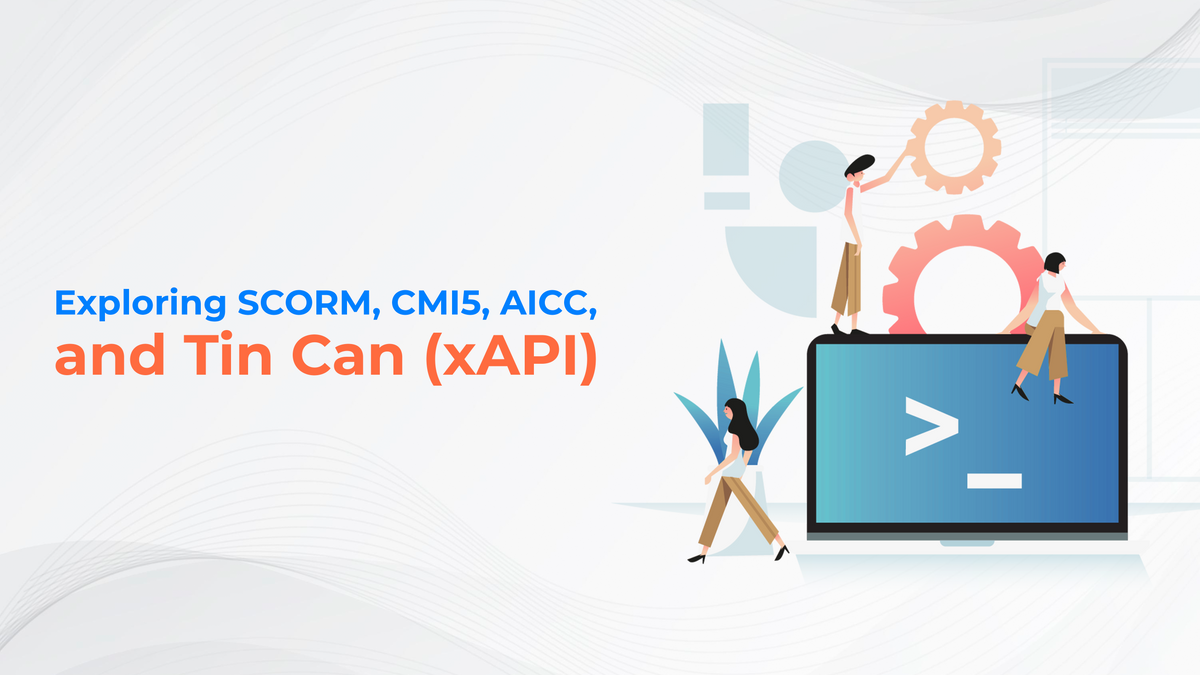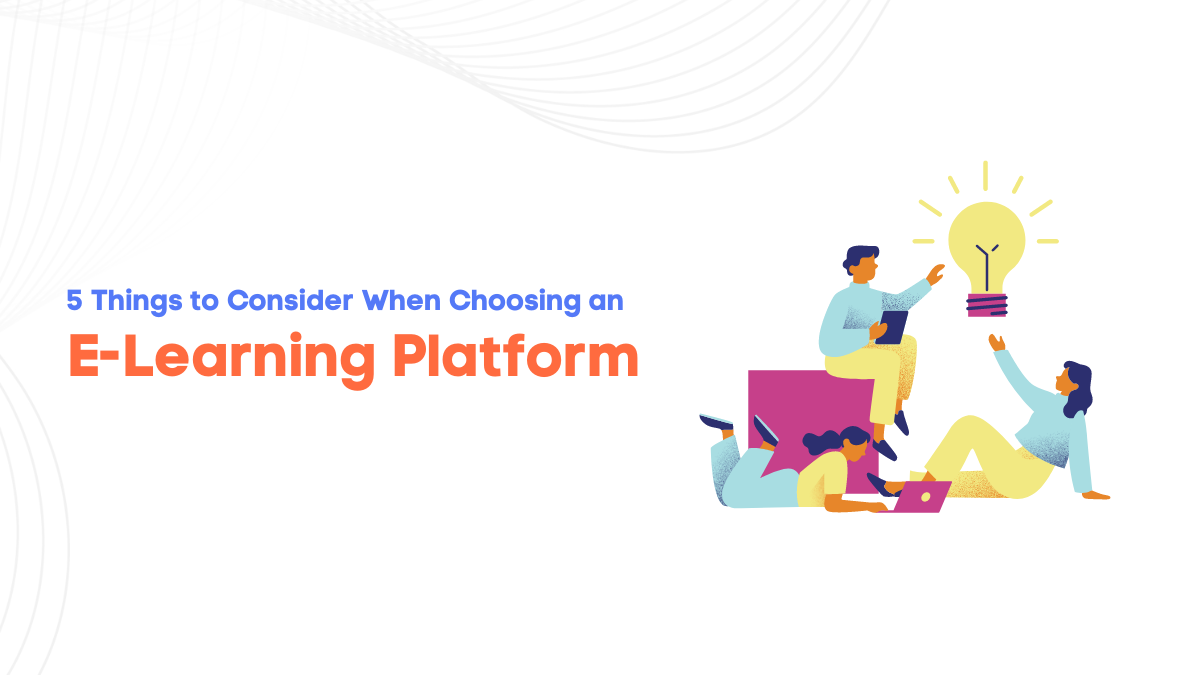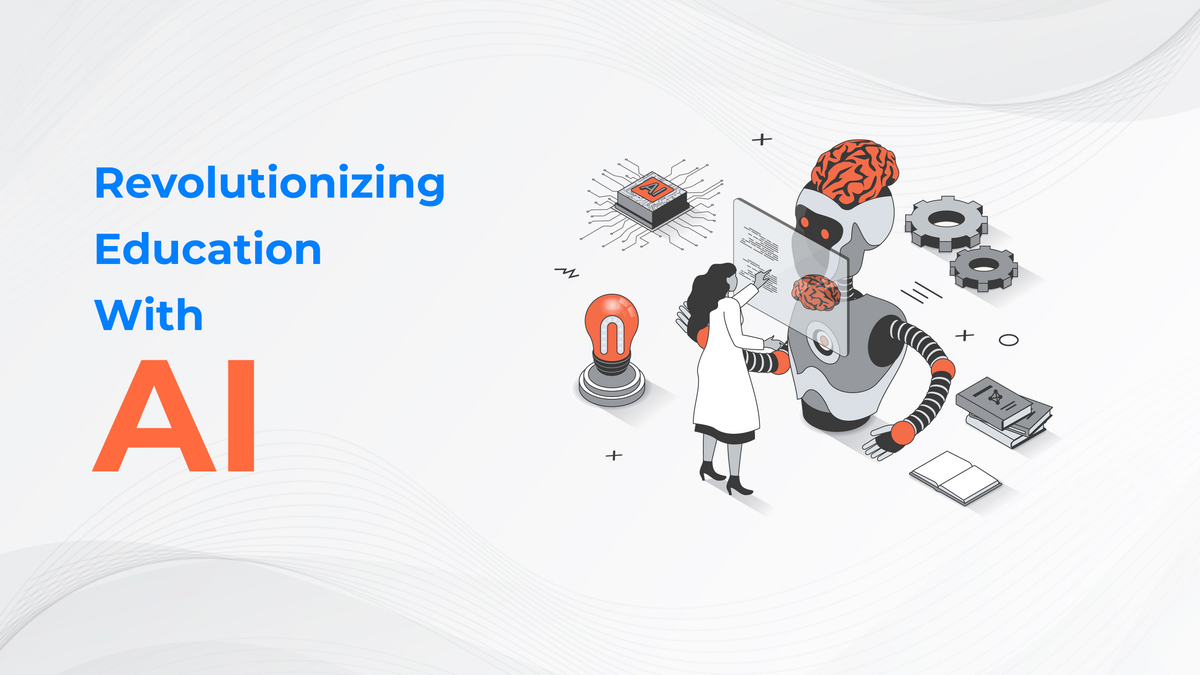In the realm of eLearning, there are various standards that govern the interoperability and compatibility of online learning content and systems. These standards ensure that eLearning materials can be easily shared, tracked, and utilized across different platforms. In this blog, we will delve into four widely recognized eLearning standards: SCORM, CMI5, AICC, and Tin Can (xAPI). By understanding these standards, educators and eLearning professionals can make informed decisions regarding content development and learning management systems (LMS).
What are SCORM & CMI5?
As digital learning becomes more commonplace, the need for standards has grown significantly. SCORM and CMI5 are two widely used eLearning standards that ensure a consistent experience across different platforms.
- SCORM is a collection of technical standards from the Advanced Distributed Learning Initiative (ADL) that enables users to track learner progress within an LMS course. This allows instructors to assess student understanding more effectively.
- CMI5 is the latest version of the SCORM standard that supports a wide variety of eLearning experiences from standalone applications to distributed learning networks. CMI5 enables developers to create interactive eLearning content that can be effectively shared between different platforms while providing useful data about learner performance throughout an entire course or program.
The Role of SCORM and CMI5 in eLearning Standards
The role of SCORM and CMI5 in eLearning standards is increasingly important. SCORM is a set of technical guidelines that define how online courses should be created so that they can be used across different Learning Management Systems. CMI5 is an extension of SCORM that provides more granular reporting capabilities for real-time learner performance tracking across multiple platforms.
Content developers need to understand which combination of these standards works best with certain Learning Management Systems to develop effective digital learning experiences. It's vital for organizations to train their employees on proper usage guidelines and available features to deploy courses into production environments. By understanding how SCORM and CMI5 fit into an organization's eLearning strategy, they can create an effective system that meets regulatory requirements and engages learners through the materials accessible from their devices.
Overview of AICC and Tin Can Standards
AICC stands for Aviation Industry Computer Based Training Committee and is a set of eLearning standards established by the aviation industry in 1988. Both SCORM and AICC allow for tracking and reporting of learner progress when using computer-based training programs. There are some key differences between them:
AICC is based on a client-server model while Tin Can is based on a distributed model.
AICC has been around longer than Tin Can but since its launch in 2013, Tin Can has become increasingly popular due to its simplicity and versatility as an open-source standard more widely adopted by the industry.
One advantage Tin Can offers over traditional SCORM-based learning systems is its ability to track multiple types of interactions beyond just basic learning activities such as comments, likes, shares, etc. This allows organizations to gain deeper insights into the impact their training programs have had on learners' performance outcomes. Besides, the flexibility offered by this standard allows developers greater control over content delivery, making it possible to build custom experiences tailored specifically for individual learners or groups depending on their needs or preferences.
To get started with Tin Can, you need an LMS that supports xAPI like Rustici Software’s Course Mill, which provides access to both the xAPI standard as well as additional features such as analytics tracking, reporting tests, surveys, expiring certificates, etc. If you want to access only xAPI, then there are also plenty of third-party providers available who offer services specifically tailored towards developing content using this new open-source standard. Ultimately though, whether your organization decides to use either SCORM or xAPI depends largely upon your individual needs, preferences, budget availability, etc. Whatever you choose, we wish you all the best!
Using & Integrating eLearning Standards with an LMS
Integrating eLearning standards with a Learning Management System (LMS) is essential for the success of any online training program. There are several standards available, such as SCORM, CMI, AICC, and xAPI, which ensure compliance with industry, government, or academic requirements.
- Implementing SCORM provides learners with the ability to view learning materials within a web browser window easily. In addition to it, SCORM enables data collection from various learning activities to track learner progress and provide educational feedback accordingly.
- CMI5 empowers instructors with more control over pacing and sequencing processes during course delivery and provides detailed tracking capabilities which enable administrators/instructors/mentors/trainers to monitor learner performance and assess mastery levels.
- AICC, on the other hand, provides more detailed tracking capabilities enabling administrators/instructors/mentors/trainers greater insight into individual learner progress and performance outcomes throughout every training program offered via their respective organization's Learning Management System platform solution.
- Tin Can API also known as xAPI is another popular standard used today by many educators who want granular detail regarding user actions taken during instruction sessions, helping them better understand what works best when conducting instructional activities within their specific organizational environment.
Implementing any of these eLearning standards into existing LMS systems can present some technical challenges due to various factors, including incorrect coding syntax being utilized alongside server configurations not optimized properly thus preventing proper functionality.
To Wrap-Up
Understanding eLearning standards is essential for both learners and educators, as it provides a consistent experience across different platforms. The four main eLearning standards that should be taken into consideration when developing an online learning program are SCORM, CMI5, AICC, and xAPI. Each of these standards offers its own unique advantages and limitations, which should be evaluated to determine which one is best suited for your individual needs. Integrating these standards with an LMS allows organizations to create effective online training programs that can easily be accessed by learners regardless of their device or location.
If you are looking to develop an effective online learning program for your organization or institution, take the time to evaluate the different eLearning standards available to select the one best suited for your specific needs.










